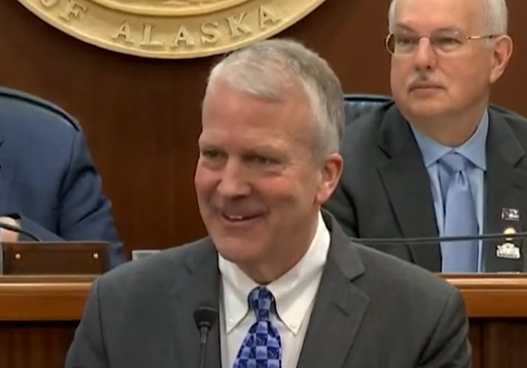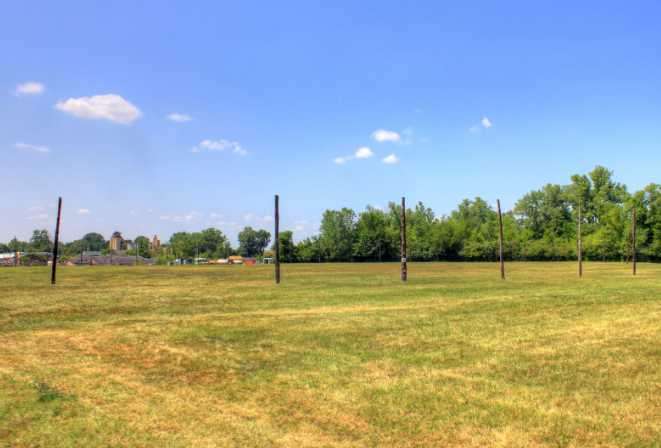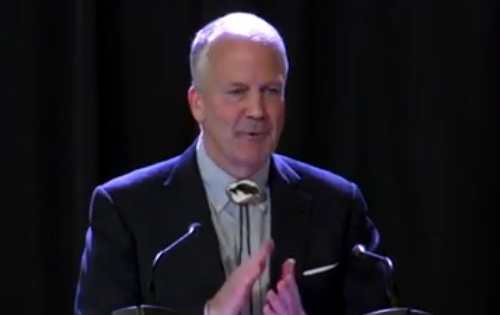
URBANA, Ill. — Natural resource management decisions in protected areas impact more than the wildlife and landscapes they’re charged to conserve. They also affect neighbors, who could otherwise hunt, build, or recreate as they choose on their own land. For decades, community members primarily voiced their opinions through brief and impersonal public comment periods. But an initiative led by environmental social scientists at the University of Illinois Urbana-Champaign is putting a new spin on neighborly communication.
“Historically, public land management agencies would offer brief periods where people could submit a remark that may or may not be considered and that typically wouldn’t result in any meaningful dialogue,” said Carena van Riper, associate professor in the Department of Natural Resources and Environmental Sciences in the College of Agricultural, Consumer and Environmental Sciences (ACES) at U. of I. “For more inclusive conservation to happen, there needs to be in-depth engagement, communication, and deliberation with diverse stakeholders. There’s real benefit to engaging people.”
Van Riper has been working toward a model of inclusive conservation for nearly a decade in the area surrounding Alaska’s Denali National Park, partnering with the National Park System (NPS) to examine the values and viewpoints of neighbors on everything from conservation priorities to tourism impacts. She and her colleagues published results of their latest engagement efforts in Sustainability Science.
The study brought Denali neighbors together in a month-long online discussion forum designed to understand their views on the benefits and threats facing the area, as well as how land management agencies could better incorporate their perspectives.
Van Riper noted that residents come from all walks of life and have priorities that span protected area conservation, indigenous use, tourism, energy development, and others.
“Although it is important, conservation is just one of many priorities,” she said. “We tried to equalize the power dynamic among interest groups and in how we framed the National Park Service and its role in defining life in Interior Alaska.”
Residents were grouped according to a values assessment, with two groups of like-minded participants and one group representing a mix of values. This allowed the research team to test whether the value-basis of decision-making affected the ways that people learned from one another and engaged in collaborative dialogue.
“I went into this project worried because a lot of online dialogue tends to be very combative. But the most wonderful discussions unfolded with this group of people; they were always thoughtful and respectful to one another. They disagreed, but we never had to step in and intervene,” said lead author Devin Goodson, a doctoral student working with van Riper. “Another one of the benefits of engaging online is people weren’t forced to fully explain their thoughts in the moment, like you’d have to do during a short public comment session. The platform created a really well informed and constructive conversation.”
After a period where participants got to know each other during focus groups, they were engaged through the Denali Discussion Forum, where the researchers posed a series of questions about the park and its management. Residents were expected to answer the questions and interact with other participants’ answers on a weekly basis during the month-long program.
Goodson said the residents discussed many of the same benefits of living near Denali, though the groups differed in the emphasis they placed on particular benefits, which included access to wilderness, solitude, recreation, hunting and fishing grounds, and the pursuit of a subsistence lifestyle. Likewise, the groups emphasized slightly different threats, including tourism, competing interests, mismanagement, and climate change – the latter was mentioned only by the mixed values group, which comprised a younger demographic. The groups diverged more strongly in their discussions on management solutions.
“We found that residents value the Alaskan landscape in a lot of ways and often identify common threats, but they come up with different ways to solve these issues. However, a common thread across the proposed solutions for resource managers was that people just wanted to feel like they were a part of the process in a meaningful way,” Goodson said. “They’re open to what that looks like, but they want to feel that the process overall is fair.”
Co-author William Stewart in the Department of Recreation, Sport and Tourism at U. of I. added, “The NPS makes well-intentioned decisions, yet sometimes, residents of nearby communities feel like their voices aren’t being heard. They need help. Social scientists have a toolkit for that. We engage community residents not as decision-makers, but as outsiders who could represent community voices to help facilitate dialogue with the park, and within the park service.”
Armed with results from the Denali Discussion Forum, which were summarized weekly by the study team with input from participants, NPS can move ahead with more informed management decisions. And they can use a similar model to solicit input for future management actions.
But the lessons extend well beyond Denali and even the National Park System. Goodson said the study is an example of one way to give average people a say in the things that impact them every day in their environment.
“People care about their environment and they’re a lot more knowledgeable than they get credit for. This is one example of how people could communicate how they feel to resource managers and other community members in their area,” he said. “There’s no reason to think our model can’t be adapted elsewhere.”
The study, “Broad values as the basis for understanding deliberation about protected area management,” is published in Sustainability Science [DOI: 10.1007/s11625-023-01423-z]. Authors include Devin Goodson, Carena van Riper, Riley Andrade, William Stewart, Miguel Cebrian-Piqueras, and Christopher Raymond.
Funding for this research was provided by a Cooperative Agreement with the National Park Service (P18AC00175) and a project called ENVISION funded through the 2017–2018 Belmont Forum and BiodivERsA joint call for research proposals, under the BiodivScen ERA-Net COFUND program, and with the support of the following national funders: Swedish Research Council for Sustainable Development (FORMAS), Federal Ministry of Education and Research, Germany, Netherlands Organisation for Scientific Research (NWO), US National Science Foundation (Grant No. 1854767), and the Ministerio de Ciencia e Innovación, Spain (Grant PCI2018-092958 funded by MCIN/AEI/https://doi.org/10.13039/501100011033). The authors also thank the Wissenschaftskolleg zu Berlin and the Center of Advanced Study, German Federal Ministry of Education and Research (BMBF) (Grant No. 01LC18064), and the University of Illinois Campus Research Board (RB19119).
[content id=”79272″]






